How to program a pounding cinematic drum part
Evoke a little movie magic with just a handful of percussion sounds

With so many superb prefab cinematic loop libraries on the market, working massive, Hollywood-style drums into your desktop productions has never been more instant and effortless a process. However, next time you find yourself looking to infuse a track with that epic blockbuster feel, why not give yourself the satisfaction of programming your own percussion section, rather than take the creative path of least resistance? All you need are a few well-chosen samples and an instrument from which to play them back. You don’t even have to create that many parts - it’s amazing how big a sound can be achieved with just five or six sparse elements and a dose of reverb.
In this tutorial, we’ll put together a tense, cinematic percussion loop of the kind that might herald, say, an army approaching at the start of a historic battle scene. We’ll be using a selection of sounds from Rob Papen’s Punch plugin drum machine, and a snare drum from EZdrummer 2, but both have been chosen for convenience more than anything - you’ll be able to get perfectly equivalent results from any basic sampler loaded with a similar set of samples. Our DAW of choice for this endeavour is Bitwig Studio, again for no particular reason, and our project tempo is a moody 62bpm…
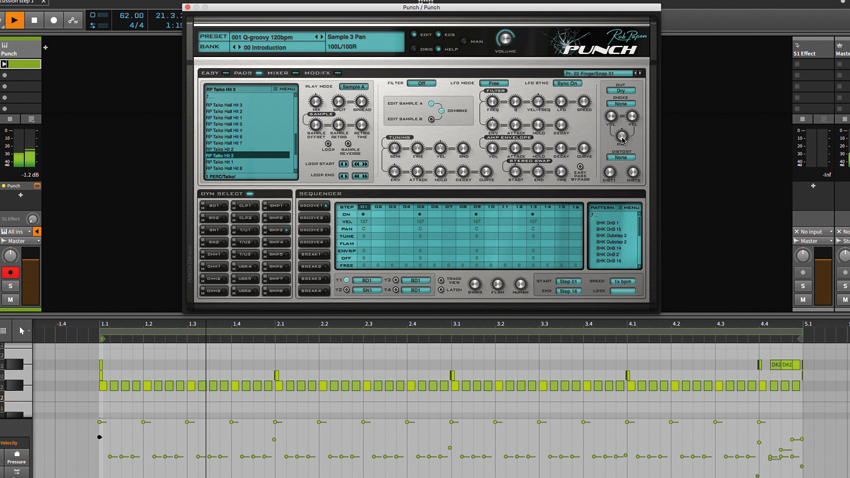
Step 1: Taiko are large, barrel-shaped Japanese drums, usually played in an ensemble. We load a set of three in Punch, and program one playing a constant semiquaver pattern with accents on the beat, another marking the beginning of each bar with a flam, the third providing a short crescendo at the phrase’s end. Subtle panning adds width.

Step 2: The semiquaver taiko sounds far too robotic, so we work through the notes, varying the velocities of each, then apply a velocity-controlled filter to introduce a bit of dynamic tonal movement. We also make sure no two or three taiko hit at exactly the same time by dragging stacked notes slightly off the grid.
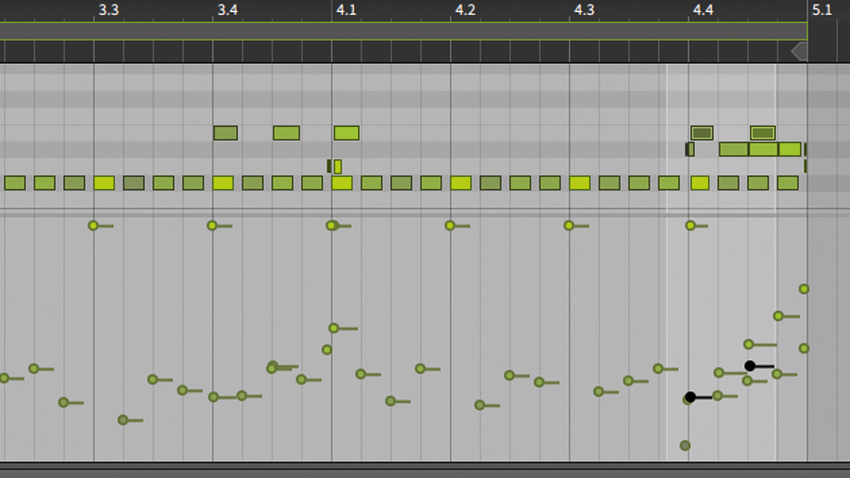
Step 3: There’s no percussion sound quite as epic as the orchestral bass drum - a much larger equivalent to the kick drum, struck with a big, soft beater. Our pattern comprises a hit at the start of every bar with two velocity-ramping hits leading into beats 2, 4 and 1. Dragging the notes a touch behind the beat adds timing variation.
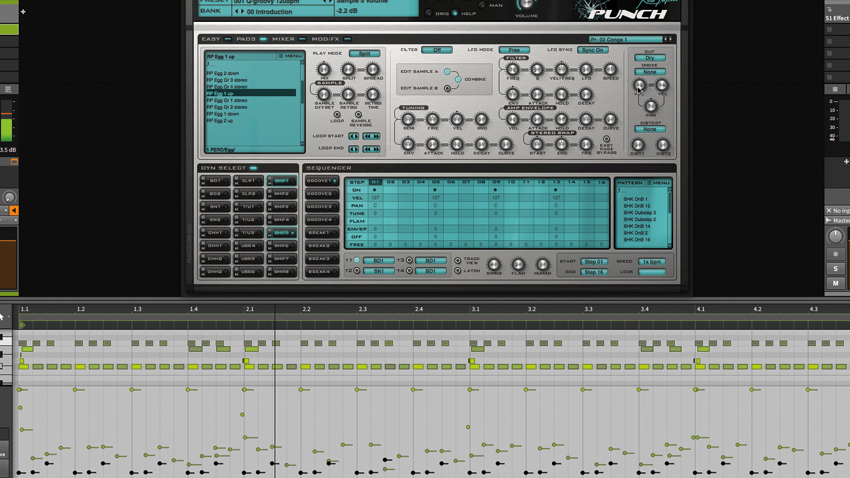
Step 4: Next, we draw in a delicate high-frequency layer using a three-note egg shaker pattern. This employs two samples in Punch’s Sample module, set up so that hits below the Split velocity threshold trigger the shorter ‘Egg Up’ sound, while hits above the threshold fire off the longer ‘Egg Down’ sample.
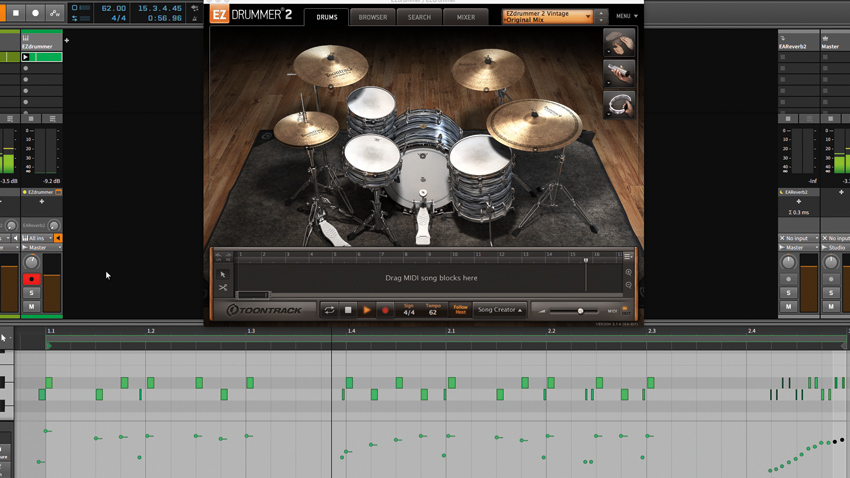
Step 5: Our final element is a military-style snare drum, using EZdrummer 2’s 14" Gretsch snare, pitched up to simulate a marching side drum, with an authentic two-bar pattern incorporating flams, drags and a roll. Note positions and velocities are manually humanised again, and the channel is panned slightly right for width.
Get the MusicRadar Newsletter
Want all the hottest music and gear news, reviews, deals, features and more, direct to your inbox? Sign up here.
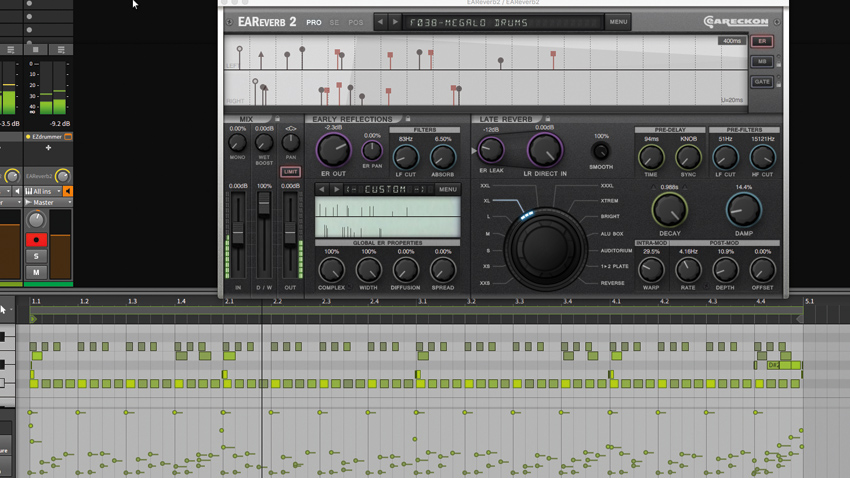
Step 6: So far, our simple percussion track sounds pretty good, but it’s lacking the essential sense of space required to make it truly cinematic. eaReckon’s EAReverb 2 delivers the goods via a tweaked version of its Megalo Drums preset, loaded on an auxiliary channel and fed using the Send controls on the two main channels.
Computer Music magazine is the world’s best selling publication dedicated solely to making great music with your Mac or PC computer. Each issue it brings its lucky readers the best in cutting-edge tutorials, need-to-know, expert software reviews and even all the tools you actually need to make great music today, courtesy of our legendary CM Plugin Suite.










